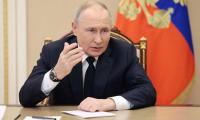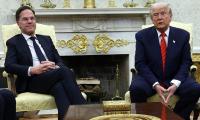On June 23, PM Sheikh Hasina Wajid promoted Lieutenant-General Waker-uz-Zaman to a four-star general, appointing him Chief of Army Staff (CAS) of the Bangladesh Army. On August 5, General Waker-uz-Zaman, in a bloodless coup without imposing martial law, took over the administration and announced the formation of an interim government.
In a television address, dressed in military fatigues and cap, General Waker-uz-Zaman confirmed Sheikh Hasina’s resignation and assumed responsibility for the government. “I am taking full responsibility. The country has suffered a lot. The economy has been hit, many people have been killed – it is time to stop the violence. I hope after my speech, the situation will improve,” he said.
On January 7, the Awami League, led by incumbent Sheikh Hasina, won 224 of the 300 directly elected seats in Jatiya Sangsad for the fourth consecutive time in a controversial election. According to The Economist, this election effectively made Bangladesh a one-party state. The United States Department of State stated that the election was not free and fair, while the UK’s Foreign, Commonwealth and Development Office described the election as lacking the preconditions of democracy.
Rewinding back to 2016, PM Sheikh Hasina signed on to the Belt and Road Initiative (BRI), and since then, Bangladesh has received approximately $30 billion in Chinese financing for thermal and renewable energy power plants, the $3.6 billion Padma Bridge, the $1.2 billion First Dhaka Elevated Expressway, and the $705 million Karnaphuli River Tunnel. Bangladesh also joined China’s ‘string of pearls’ strategy, with China financing the $1.09 billion Matarbari Deep Sea Port and the $15 billion Payra Sea Port. There are now concerns about the sustainability of this debt, especially if Bangladesh struggles to meet repayment schedules.
On July 20, PM Sheikh Hasina met with President Xi Jinping and her Chinese counterpart Li Qiang in Beijing. Bangladesh and China signed 21 agreements and MoUs and announced seven more projects. During the meetings, both countries agreed to elevate their “strategic partnership” to a “comprehensive strategic cooperative partnership.”
Rewinding back to 2022, on October 12, the Biden Administration sent its classified National Security Strategy (NSS) to Congress. The NSS serves as a foundational document for America’s national security policy, guiding decision-making across government agencies. It effectively communicates the administration’s priorities to the public, Congress, and the global community.
According to an unclassified fact sheet released to the public, the NSS is organized around two key points: the containment of China and the isolation of Iran. The connection between the “containment of China” and the Indo-Pacific region is intrinsic to U.S. strategic interests, and Bangladesh, as a key country in the Indo-Pacific, plays a significant role in this strategy.
Were the protests in Bangladesh organic? The true nature of their origins may never become clear. Organic protests have leadership from within the protesting group itself. In contrast, inorganic protests are often pre-determined or imposed, with leadership and objectives established beforehand. Planned protests, in particular, have specific goals and utilize targeted tactics to achieve them. They involve a core group of organizers who set the purpose, location, and designate leaders. These protests typically come with allocated resources, including funding, equipment, and trained individuals to provoke or disrupt. Additionally, planned protests involve pre-selected targets, strategic coordination and established communication systems to ensure effectiveness. The recent developments in Bangladesh and their strategic interactions highlight the complex interplay between Bangladesh, regional dynamics and great power competition. As the United States realigns its foreign policy through its National Security Strategy, the Indo-Pacific region—where Bangladesh plays a pivotal role—remains a critical arena for strategic competition and collaboration. For Pakistani policymakers navigating the intricate landscape of global influence and security, a deep understanding of these evolving dynamics is essential.
Opposition leader Omar Ayub joined JIT probe, sources said on Thursday
Residents further said gas supply to some areas, including Rustam Town has been suspended
Meanwhile, heavy firing reported between law enforcement agencies and dacoits







